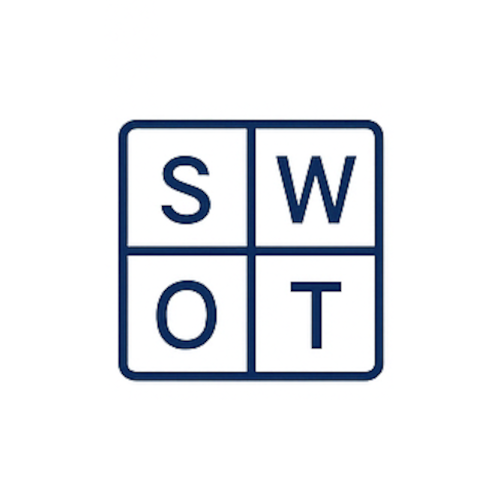Given the present economic conditions, businesses frequently encounter crises and challenges. Whether facing an economic downturn, a disruptive market shift, or unexpected internal challenges, managing through these difficult times requires more than quick fixes. For business owners and managers, strategic planning becomes essential in providing a clear approach to regroup, refocus, and emerge stronger.
The Importance of Strategic Planning During a Crisis
When a crisis strikes, the immediate instinct might be to address urgent issues as they come. This reactive approach, though understandable, often results in ongoing firefighting that fails to address the root causes of the problem. Instead, strategic planning offers a proactive framework for managing crises more effectively.
Regroup and Refocus
Strategic planning provides a structured method to reassess and realign your priorities when facing difficult times. By stepping back and evaluating the overall situation, you can better understand the key challenges your business faces. This process involves:
- Assessment of the Situation: Analyze the current crisis to identify the primary issues and their potential impacts on your business.
- Reevaluation of Priorities: Determine which areas need immediate attention and which can be addressed later. This helps in realigning your focus to tackle the most pressing issues first.
By regrouping and refocusing, you create a solid foundation to address problems effectively and allocate resources where they are needed most.
Optimize Resource Utilization
One of the crucial aspects of strategic planning is optimizing the use of available resources. During a crisis, every resource—whether financial, human, or technological—needs to be utilized effectively. Strategic planning helps you:
- Assess Resource Availability: Determine what resources you have at your disposal and how they can be best employed.
- Allocate Resources Wisely: Direct resources to areas where they will have the most significant impact, avoiding waste and ensuring that critical needs are met efficiently.
This approach not only conserves resources but also maximizes their effectiveness, contributing to a more resilient response to the crisis.
Coordinate Action and Collaboration
Effective coordination and collaboration are vital during a crisis. Strategic planning promotes this by:
- Facilitating Communication: Ensuring that all parts of the organization are informed and aligned regarding the crisis response. Clear communication channels help prevent misunderstandings and ensure that everyone is on the same page.
- Engaging Stakeholders: Involving key stakeholders in the planning process fosters a shared sense of responsibility and commitment. This collaborative approach helps unify efforts and aligns diverse teams towards common goals.
By promoting effective coordination, strategic planning ensures that your organization’s response is cohesive and well-orchestrated.
Prioritize and Execute
Strategic planning also aids in prioritizing actions. This involves:
- Identifying Critical Objectives: Focus on the most important goals that need to be achieved to overcome the crisis. This might include stabilizing finances, addressing operational disruptions, or managing stakeholder relations.
- Implementing Initiatives: Develop and execute initiatives that address these critical objectives. By prioritizing actions based on their potential impact, you address the root causes of the crisis rather than merely dealing with its symptoms.
Effective prioritization ensures that efforts are concentrated on achieving the most significant outcomes.
Moving Beyond Crisis Management
Strategic planning is not just about managing the current crisis; it’s also about preparing for the future, by:
- Setting Clear Objectives: Establishing well-defined objectives for both short-term recovery and long-term growth.
- Implementing Initiatives: Developing and executing strategies that not only address immediate issues but also position your business on the right track.
Conclusion
In summary, strategic planning is essential for running businesses through difficult times. It offers a structured approach to assess issues, prioritize actions, and optimize resource utilization. By fostering coordination and collaboration, strategic planning ensures that your organization’s response is effective and aligned with its goals. Moving beyond mere crisis management, strategic planning enables businesses to take control and streamline operations. Instead of reacting to crises, a strategic approach allows you to proactively address challenges and build a resilient foundation.
Why SengiSolutions is Essential
- Structured Framework: SengiSolutions provides a clear, step-by-step framework for strategic planning. From assessing current challenges to optimizing resources and setting priorities, our platform guides you through each phase of the process.
- Enhanced Coordination: Effective crisis management relies on cohesive teamwork. Our platform facilitates seamless communication and collaboration across your organization, aligning all stakeholders towards common goals.
- Optimized Resources: Ensure every resource is used efficiently with SengiSolutions. Our platform help you allocate financial, human, and technological resources where they will make the most impact.
- Proactive Strategy: Move beyond immediate issues to prepare for the future. SengiSolutions supports you in setting clear objectives and developing initiatives that build a solid foundation.
Strategic planning with SengiSolutions turns crisis management from a reactive response into a proactive strategy. Visit https://www.sengisolutions.com to see how we can help your organization manage current and future obstacles.












